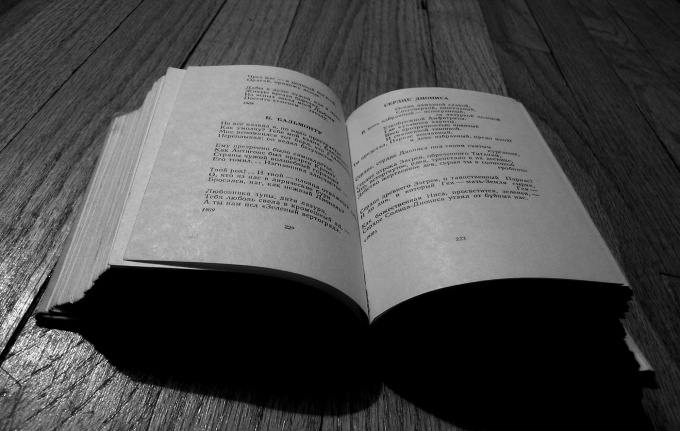Instruction
1
First and foremost, to determine the size, you need to read a poem rhythmically, making power emphasis, not paying attention to the meaning of the words, as if beating a drum.
2
Write a poetic line, and emphasize all the syllables (or vowels), which was a shock. For example:
my uncle the most fair rules
when not in the joke was sick...
my uncle the most fair rules
when not in the joke was sick...
3
Now count how many unstressed syllables are located between the drums. In our example, one stressed syllable, there is one unstressed, then it's a two-syllable size is iambic or ferrets. Remember: in trochaic the stress falls on the first of two syllables, the iambic in the second. So, we have taken an example from "Eugene Onegin" is iambic.
The example of chorea:
my cheerful ringing ball
you where you were going at a gallop
A little practice, you will learn how to determine the size of the verse in the mind, not noting stressed and unstressed syllables on paper.
The example of chorea:
my cheerful ringing ball
you where you were going at a gallop
A little practice, you will learn how to determine the size of the verse in the mind, not noting stressed and unstressed syllables on paper.
4
Similarly, distinguish three-syllable poetic dimensions. The only difference is that in one stop in this case would be one strike and two unstressed syllables. If the stress falls on the first syllable – this size is called a dactyl, if on the second, the amphibrach, the third – anapest.
An example of the dactyl:
clouds of heaven, the eternal Wanderers
Example amphibrach:
a galloping horse will stop,
in a burning Hut
Example of anapest:
I love life,
that in itself is not new
An example of the dactyl:
clouds of heaven, the eternal Wanderers
Example amphibrach:
a galloping horse will stop,
in a burning Hut
Example of anapest:
I love life,
that in itself is not new
5
To determine the amount of the stop (stop is a group of syllables, one of which is stressed), that is, find out trehshovnye it or ferrets, for example, iambic pentameter, you need to count the number of accented syllables. In the example from "Eugene Onegin" we see that it is chetyrehstopnym pentameter. A poem by S. Marshak on the ball chetyrehstolpnyj ferrets.
Remember that stressed syllables for rhythmic reading may not correspond to the normal accent in words! For example, the word "sick" from our first example, the actual accented one ("O"), but rhythmic reading we hear the second "A".
Remember that stressed syllables for rhythmic reading may not correspond to the normal accent in words! For example, the word "sick" from our first example, the actual accented one ("O"), but rhythmic reading we hear the second "A".
